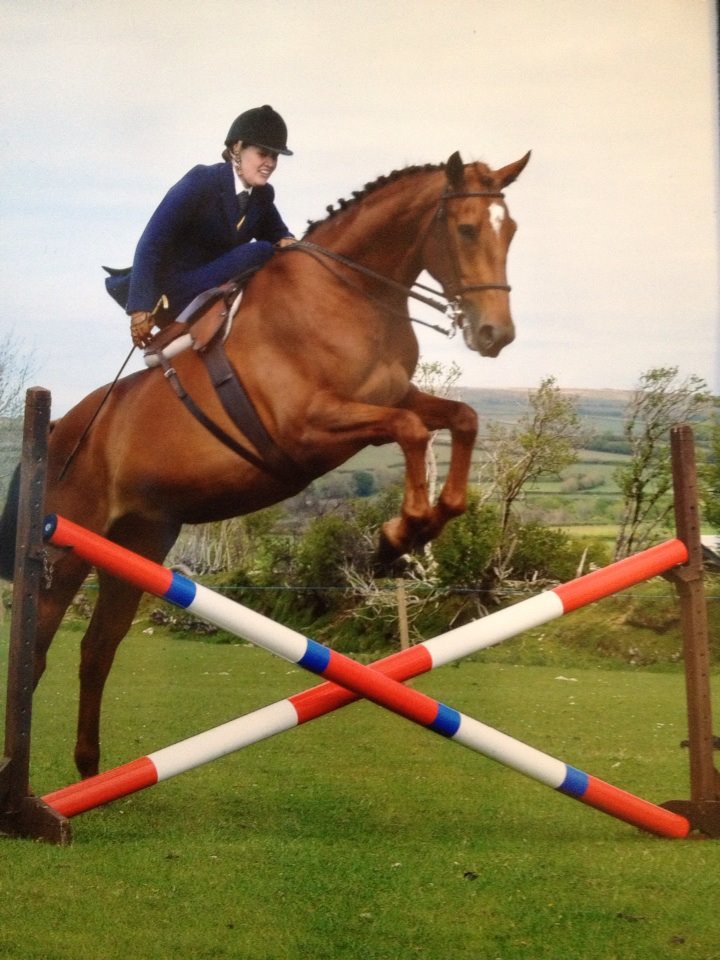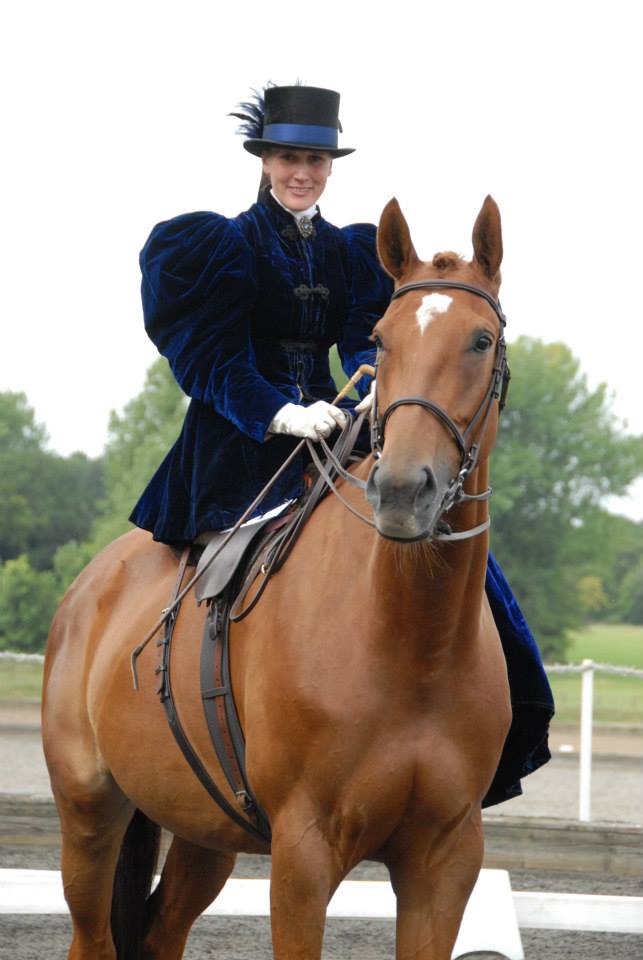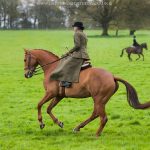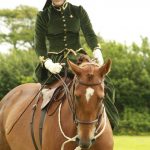 The lovely Helen Hollick agreed to guest-post on my blog and I was thrilled to open her post and find out it was a history of women (and apparently men too!) riding aside! As a horse lover this is a fascinating post and as a history lover it just ticks all the boxes – enjoy:
The lovely Helen Hollick agreed to guest-post on my blog and I was thrilled to open her post and find out it was a history of women (and apparently men too!) riding aside! As a horse lover this is a fascinating post and as a history lover it just ticks all the boxes – enjoy:
We’ve all seen ladies riding side-saddle in various movies and TV dramas (Downton Abbey as an example.) The correct term is Riding Aside. My daughter rides, competes and jumps aside. (Yes, that is what I said: jumps.) Contrary to belief riding side-saddle, at least with a modern (post Victorian) saddle, is safer than riding astride!
Tudor & Elizabethan side-saddle
The ‘saddle of queens’ by Tudor times was considered the proper way for a lady to ride. Early side-saddles were – literally – side saddles, a bit like a chair with a footplate. They were padded, highly decorated, and built upon a man’s astride saddle. Presumably, the lady rider was led, either by a man on foot or from a rider on another horse for it would have been uncomfortable (and difficult) to control a horse at anything faster than a walk while swivelled at the waist to face forward enough to steer. In Greek and Roman art women ride aside, probably also sitting on a chair-like structure.
The sideways-facing ‘chair’ was turned to face forward in Tudor times. Queen Elizabeth I rode this way, her back supported by the ‘chair’ shape, with her right leg hooked round a front horn, or ‘ pommel’.
It is unknown when the more modern upright horns came into use. The second horn, an appendage that comes from the right side of the saddle, is commonly attributed to Catherine de Medici (1519-1589). This gave women a more secure seat, enabled independent control and a faster gait.
Victorian side-saddle

The late Victorian era is typically how we think of side-saddle riding. Early in the 1800s the ‘leaping horn’ or ‘head’ was introduced, and the balance strap (another girth) was created. This is attached to the right rear of the saddle, passes under the horse’s belly, and fastens to the left front. It stabilises the saddle and offsets the extra weight from both legs being on the left side of the horse.
The hunting field was a great place to meet a future husband; unmarried Victorian ladies wore a navy habit with a bowler hat; while married ladies wore a black habit with silk (top) hat, or a black habit and black bowler for less significant meets. As a widow, Queen Victoria wore black and ladies of the day emulated her. Prior to Prince Albert’s death, ladies dressed more colourfully.
A side-saddle horse was trained to walk and do a steady canter as it was thought unseemly for a lady to be ‘bouncing about’ at the trot, (especially a particular part of her anatomy!) Victorian riders were quite often sewn into their habits in order to show off their figure to best advantage, with the jackets cut to resemble a bustle – bustles, and corsets were not designed for riding!
Riding aside with modesty!
A big problem would be what to wear for modesty underneath a habit. Bloomers were not in use, so possibly women donned men’s breeches beneath their skirts, just in case a fast pace or the wind inadvertently revealed all.
Men riding aside
Men also rode aside: soldiers who lost lower limbs in World War I, and in World War II, aside riders laid field telephone cables from a cable-drum on the back of a galloping horse. Male grooms would also have ridden side-saddle, primarily to school a lady’s horse or to ensure it was exercised before she mounted.
Riding along Rotten Row
Rotten Row, in London’s Hyde Park was the place to ride for the Victorian lady. It was the Facebook of the age – want to meet your friends? Find a husband? Get yourself a horse and ride (elegantly aside) in the Row.
And if you were a horse-dealer with a horse to sell (that possibly wasn’t all it was cracked up to be) an evening in the Row could guarantee a sale. All you had to do was find a lady of ‘ill-repute’, put her in a fancy frock with a low neckline, and mount her aside on the horse. The men would be so busy ogling her they would buy the horse.
A strategy still used today by the motorcar trade!
By Helen Hollick
Helen Hollick lives on a thirteen-acre farm in Devon. Born in London, Helen wrote pony stories as a teenager, moved to science-fiction and fantasy, and then discovered historical fiction. Published for over twenty years with her Arthurian Trilogy, and the 1066 era, she became a ‘USA Today’ bestseller with her novel about Queen Emma The Forever Queen (titled A Hollow Crown in the UK) She also writes the Sea Witch Voyages, pirate-based adventures with a touch of fantasy.
As a supporter of Indie Authors she is Managing Editor for the Historical Novel Society Indie Reviews, and inaugurated the HNS Indie Award.
Helen’s social:
Blog: www.ofhistoryandkings.blogspot.com
FB: www.facebook.com/HelenHollickAuthor
Twitter: @HelenHollick
Sea Witch FB page: https://www.facebook.com/HelenHollick.SeaWitchVoyages/

[All images under copyright to Helen Hollick]






Thanks for the invite to guest on your blog!
You’re so welcome Helen – thank you for a cracking post!
Very interesting! I’ve always wondered if the lady’s right leg would fall asleep while riding astride.
Hi J’nell my daughter finds that if she hasn’t ridden aside for a while then, yes, she gets cramp, but when she’s been riding a lot it isn’t a problem, the muscles get used to it. So for ladies who only rode aside it wouldn’t have been a problem.
To the best of my knowlege, I have read of side saddles in the Later Medieval period- but some Medieval women seem to have ridden astride. According to one source, there was a special type of riding skirt used to preserve modesty in those cases.